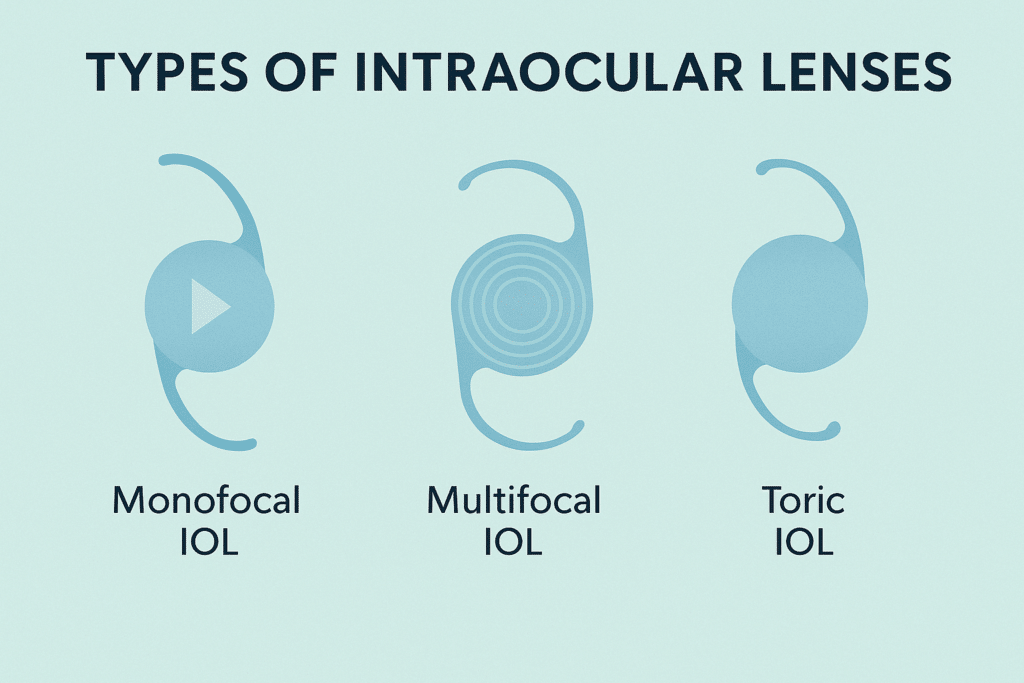Your vision correction experience depends heavily on ICL and cataract factors. ICL surgery has gained popularity among people who want to break free from glasses. The numbers tell an amazing story – 98% of patients achieve excellent vision after the procedure. More than a million people worldwide have received these implants successfully in the last two decades. ICL surgery gives you a permanent solution that you can reverse if needed, and you won’t need much recovery time.
You might ask about the long-term effects. Research shows that only 1.96% of patients develop significant cataracts within 5 years after ICL implantation. People over 40 and those with severe short-sightedness beyond -12 dioptres face higher risks. Cataract surgery boasts an impressive 95% success rate. Understanding how ICL differs from cataract surgery helps you make smart choices about your eye health. Our expert London surgeons explain in this piece what happens when cataracts develop after ICL surgery and the best ways to protect your vision for years ahead.

Understanding ICL and Cataract Surgery
The difference between ICL surgery and cataract procedures helps patients make better decisions about their vision correction options. These eye surgeries serve unique purposes but share some aspects in their approach.
What does ICL surgery involve?
Implantable Collamer Lens (ICL) surgery adds a corrective lens to your eye and preserves your natural lens. The procedure takes just 15-20 minutes per eye, and surgeons can treat both eyes on the same day. Your surgeon makes a small keyhole incision (2-3mm) at your cornea’s edge. They fold and insert the specially designed lens through this tiny opening and position it behind your iris but in front of your natural lens.
The ICL uses Collamer® – an advanced material that combines plastic and collagen to create a natural and flexible lens. This biocompatible material attracts water and lets essential gases and nutrients pass through, which makes it perfect for implantation. The latest EVO ICL has a small central hole that allows natural fluid circulation in your eye. This eliminates the need to perform additional laser procedures before surgery. Most patients see better vision within 24 hours, and many notice improvements right away. Recovery happens quickly you can return to work the day after surgery.

Is ICL and cataract surgery the same?
ICL and cataract surgery have some similarities, but they are two different procedures:
- Purpose: ICL surgery adds a lens to correct refractive errors without removing your natural lens. Cataract surgery removes your clouded natural lens and puts in an artificial one.
- Surgical approach: ICL surgeons position the new lens in front of your existing lens. Cataract surgery removes your natural lens completely using phacoemulsification (ultrasound technology).
- Timing and necessity: ICL remains an elective procedure to correct vision. Patients need cataract surgery when their natural lens clouds and affects daily activities.
- Reversibility: Surgeons can remove ICL if needed, but cataract surgery permanently removes your natural lens.
ICL works with your existing lens, while cataract surgery replaces it completely.
How cataracts affect the natural lens
Proteins in your eye’s natural lens break down and clump together to form cataracts, which create cloudy patches. This age-related process makes the lens lose its transparency over time. You might not notice symptoms early because cataracts develop gradually. The clouding grows and blocks light from reaching your retina properly as the condition progresses. Vision becomes blurred or misty – like looking through a foggy window. You’ll notice duller colours, more difficulty driving at night, and need extra light to read.
Cataracts cause over one-third of vision impairment cases in people over 75 in the UK. About 2.5 million people aged 65 and older experience some cataract-related visual problems. Surgical removal of the cloudy lens and replacement with a clear artificial lens remains the only proven treatment. The difference between these procedures explains why experienced surgeons at prominent institutions like Precision Vision London must manage cataract development after ICL surgery with special care.
Can Cataracts Develop After ICL Surgery?
Many patients who want vision correction surgery ask if ICL implants might cause cataracts later in life. Let’s look at what research tells us about this important question.

How common is cataract after ICL?
The data shows encouraging results – cataracts after ICL surgery don’t happen often. Research shows that about 1.96% of patients develop serious cataracts within 5 years of getting ICL. A “serious cataract” means your vision drops by more than two lines on the eye chart, you see bothersome glare, and you need the ICL removed. Looking at longer timeframes, a big 14-year study found that only 2.7% of eyes needed their ICL removed because of vision-affecting cataracts. After 10 years, some studies show cataracts in 19.7% of eyes. Different studies report varying rates from 6.2% to 54.8% when following patients for over 10 years. These numbers mostly come from older ICL models. The technology has improved by a lot over time, and newer designs are much safer.
Risk factors: age, myopia, and eye anatomy
Your chances of getting cataracts after ICL surgery can go up because of several things:
- Age at implantation: People over 40 who get ICL surgery face much higher risks. Studies show that almost all patients (92%) who got serious cataracts were either above 40 or had very high myopia.
- Degree of myopia: Eyes with severe short-sightedness over -12 dioptres have a higher chance of developing cataracts after ICL.
- Anterior chamber depth: Shallower anterior chambers make cataracts more likely. Eyes that developed cataracts had 0.275mm less space between the ICL and natural lens compared to those that didn’t.
- Vault height: Low vault height less than 250 μm raises cataract risk because it blocks fluid flow to the front of the crystalline lens.
- Gender considerations: Men seem more likely to get cataracts. Most cases (10 out of 12) of serious cataracts happened in male patients.
EVO ICL and cataract risk profile
Newer ICL designs have made the procedure much safer. The latest EVO ICL has a central Aquaport (hole) that lets fluid flow naturally through the eye. This small change has led to amazing results. The largest long-term studies of the EVO pIOL show almost no cataract cases, even in patients with lower vault measurements. This is a big improvement over older ICL versions. Montes-Mico and colleagues found that cataracts after V4c ICL with the central port dropped to just 0.17%.
Recent long-term studies of the EVO pIOL show almost zero cataract cases, even when vault measurements are lower – something that worried doctors with older models. This is much better than the cataract risk seen with earlier ICL versions. At Precision Vision London, we only use the newest EVO ICLs. These provide great safety along with excellent vision results. Our surgeons check all risk factors carefully during your consultation to give you the best advice for your eyes.
What Happens If You Develop Cataracts After ICL?
Patients who recognise early signs of cataracts after ICL surgery can manage them quickly and effectively. Studies show cataract development happens in just 1.96% of patients over 5 years. This knowledge helps you feel more confident about your vision care trip.
Early signs to watch for
Your vision changes gradually after ICL cataract development, so regular check-ups become crucial. Watch out for these changes in your vision:
- Progressive blurring that glasses cannot correct
- Increased sensitivity to light and glare, especially when driving at night
- Colours appearing duller or vision becoming cloudier
- Vision loss exceeding two lines on an eye chart
- Disruptive glare interfering with daily activities
These changes develop slowly in most cases. Medical literature shows rare cases where cataracts grew faster—within just one month after ICL implantation. Regular follow-up care becomes vital because of this.
How cataracts are diagnosed post-ICL
Advanced diagnostic technology helps doctors monitor cataracts after ICL surgery through complete eye examinations. Specialists can get a full picture when you schedule an immediate appointment after noticing vision changes. Anterior subcapsular cataract (ASC) appears most often after ICL, showing up either alone or with other types in 69% of cases. On top of that, anterior cortical cataracts show up in about 39% of post-ICL cataract cases. Doctors check the space between your ICL and natural lens, focusing on the vault height. Research reveals that tight spacing between the ICL and natural lens especially measurements below 200 µm means a much higher cataract risk.
ICL removal planning in the UK
Treatment usually involves removing both the ICL and the cloudy natural lens once doctors diagnose cataracts after ICL. Your surgeon will then put in a new intraocular lens (IOL). Patients see excellent results after this procedure. Studies show that patients’ vision improves after ICL removal, cataract extraction, and IOL implantation. Vision stability improves compared to the original ICL results.
Precision Vision London prefers a single-stage procedure that fixes both the ICL and cataract at once. This quickest way cuts down recovery time and needs just one surgery. Complex cases might need a two-stage approach removing the ICL first, then doing cataract surgery later to get the best results. Research across multiple centres looking at 83 eyes confirms this combined approach stays safe and reliable without major complications. This explains why our surgeons choose this method for most patients who need post-ICL cataract care.
Treatment Options and Surgical Planning
Expert planning becomes vital when cataracts develop after ICL surgery. We tailor our approach to each patient to achieve the best visual outcomes with minimal impact on their daily life.

Combined ICL removal and cataract surgery
Most specialists recommend a single-stage procedure to manage ICL and cataracts. This method lets us remove the ICL, extract the cloudy natural lens, and implant a new intraocular lens (IOL) during one operation. The combined procedure gives excellent vision results, and most patients see substantial improvements in their visual acuity. Studies show that doing ICL removal and cataract surgery together is safe and predictable, with no vision-threatening complications reported. Patients then benefit from shorter recovery times and only need one surgical session.
Staged procedures: when and why
Sometimes your surgeon might suggest a two-stage approach – we remove the ICL first and do the cataract surgery later. We saved this method for cases where eye stability is uncertain or other complications exist. To name just one example, patients with weak zonules (the fibres that support your lens) might get better results from staged procedures.
Choosing the right intraocular lens (IOL)
Picking the right replacement lens becomes significant after we remove your cataract and ICL:
- Monofocal IOLs give sharp vision at one distance (usually far away) but you’ll need reading glasses for close work
- Multifocal IOLs help you see in a variety of distances, which might reduce your need for glasses
- Toric options fix astigmatism while treating cataracts
Your lifestyle, what you need from your vision, and your eye measurements all play a role in this choice.
Precision Vision London’s approach to complex cases
Our surgical team at Precision Vision London ranks among the UK’s finest. We have the expertise to treat patients who need specialised care. We’re the first UK clinic with the state-of-the-art Alcon Refractive Suite, which gives us unmatched precision during cataract surgery after ICL implantation. Our process includes detailed consultations that last about 2 hours. During this time, experienced refractive optometrists run thorough tests before you meet our Medical Director to create your personalised treatment plan.
Long-Term Vision Strategy After Surgery
Patients typically see remarkable improvements in their vision after successful ICL removal and cataract surgery. Clinical studies show impressive outcomes for patients starting this new phase of their vision experience.
Restoring vision with advanced IOLs
Vision restoration often surpasses expectations after combined ICL removal and cataract surgery. Research shows 87% of patients gain three or more lines of vision after surgery. Your choice of intraocular lens (IOL) is vital to your results:
- Monofocal IOLs deliver sharp vision at one specific distance (typically far) with excellent contrast and performance in dim lighting
- Multifocal IOLs provide vision at all distances, which could reduce your need for glasses
- Toric options correct astigmatism while addressing other vision issues
Reducing dependence on glasses
Better vision without glasses is a main goal for many patients. Studies show approximately 76% of eyes achieve 20/20 vision or better following the procedure. Modern premium IOLs help four out of five patients become completely glasses-free.
Advanced IOL development continues because patients need freedom from spectacles. Extended Depth of Focus (EDOF) lenses, to cite an instance, provide clear vision from intermediate to distance while maintaining functional near vision. Patients with specific job requirements might benefit from targeted slight residual myopia to optimise intermediate and near vision.

Maintaining eye health post-surgery
Your long-term vision needs ongoing care. Regular eye examinations help monitor your eye health and address concerns quickly. A balanced diet rich in fruits and vegetables’ antioxidants protects your eyes from oxidative damage. Good hydration keeps natural moisture levels balanced. Precision Vision London’s aftercare packages include comprehensive follow-up appointments and enhancement procedures when needed. We give you personalised advice about visual activities that help your brain adapt to new visual information after surgery.
Conclusion
Knowing the connection between ICL surgery and possible cataract growth will help you make better decisions about your vision care. The latest EVO ICL technology has cut down cataract risk to just 0.17% compared to older models. A detailed pre-surgery check at Precision Vision London will confirm if ICL surgery suits you and reduces possible complications.
The low risk shouldn’t worry you because good solutions are available. Our expert surgeons can fix both issues at once if cataracts develop after ICL surgery, with excellent results. Treatment helps most patients reach 20/20 vision or better, and many don’t need glasses anymore. Modern ICL technology marks a huge step forward in vision correction. The new lenses work well with your eye’s natural structure and let important nutrients and fluids flow properly. This shows how refractive surgery keeps getting better, giving safer results and clearer vision than before.
You should plan your long-term vision care carefully. Regular eye checks after ICL surgery keep your eyes healthy and catch any changes early. Precision Vision London’s aftercare plans give you support throughout your treatment with personal guidance at each stage. The best choice for your vision needs both quick results and future benefits. ICL surgery can change your daily life for years with the right patient selection, modern technology, and skilled surgical care.
Key Takeaways
Understanding the relationship between ICL surgery and cataract development helps you make informed decisions about your vision correction journey with confidence.
- Modern EVO ICL technology dramatically reduces cataract risk to just 0.17%, compared to 1.96% with older models over 5 years.
- Age over 40 and severe myopia exceeding -12 dioptres are primary risk factors for post-ICL cataract development.
- Combined ICL removal and cataract surgery achieves excellent outcomes, with 87% of patients gaining three or more lines of vision.
- Single-stage procedures are preferred by specialists, offering convenience and reduced recovery time compared to staged approaches.
- Regular eye examinations after ICL surgery ensure optimal long-term eye health and prompt detection of any vision changes
The latest ICL technology works harmoniously with your natural eye anatomy, whilst expert surgical planning ensures that even rare complications like cataracts can be effectively managed with outstanding visual results.
FAQs
Q1. Can I have cataract surgery after ICL implantation? Yes, cataract surgery can be successfully performed after ICL implantation. The ICL can be removed and replaced with an intraocular lens (IOL) during cataract surgery, typically in a single procedure. This does not compromise the effectiveness of cataract treatment.
Q2. What is the risk of developing cataracts after ICL surgery? The risk of developing clinically significant cataracts after ICL surgery is relatively low. With modern EVO ICL technology, the risk has been reduced to approximately 0.17% compared to 1.96% with older models over a 5-year period.
Q3. At what age can I consider ICL surgery? ICL surgery is generally suitable for adults between 21 and 45 years old. However, the ideal age range may vary depending on individual eye health and other factors. Patients over 40 have a slightly higher risk of developing cataracts post-ICL, so thorough pre-operative assessment is crucial.
Q4. How much does ICL surgery typically cost in the UK? In the UK, ICL surgery costs typically range from £2,400 to £3,600 per eye for advanced implantable lens procedures. Many clinics offer payment plans, with monthly options around £160. The exact price depends on factors such as the surgeon’s expertise and the specific technology used.
Q5. What are the long-term vision outcomes after ICL removal and cataract surgery? Long-term vision outcomes after ICL removal and cataract surgery are generally excellent. Studies show that about 87% of patients gain three or more lines of vision after the combined procedure. With modern intraocular lenses, approximately 76% of eyes achieve 20/20 vision or better, and many patients become completely glasses-free.
Authors & Reviewer
-
 Olivia: Author
Olivia: AuthorHi, I'm Olivia, a passionate writer specialising in eye care, vision health, and the latest advancements in optometry. I strive to craft informative and engaging articles that help readers make informed decisions about their eye health. With a keen eye for detail and a commitment to delivering accurate, research-backed content, I aim to educate and inspire through every piece I write.
-
 Dr. CT Pillai: Reviewer
Dr. CT Pillai: ReviewerDr. CT Pillai is a globally recognised ophthalmologist with over 30 years of experience, specialising in refractive surgery and general ophthalmology. Renowned for performing over 50,000 successful laser procedures.


